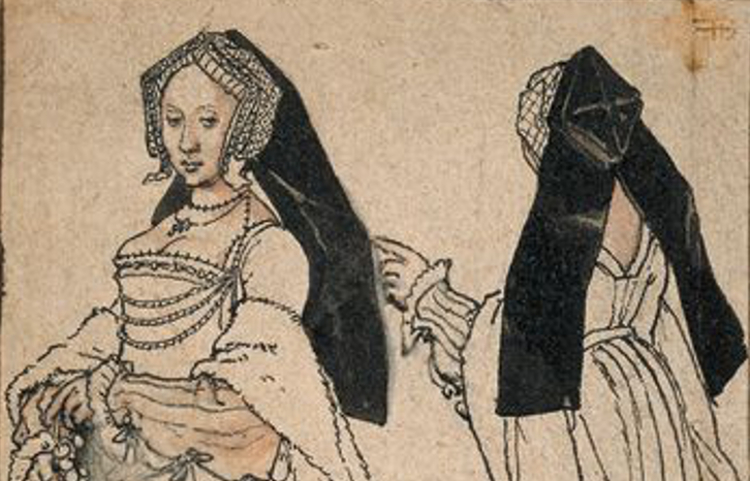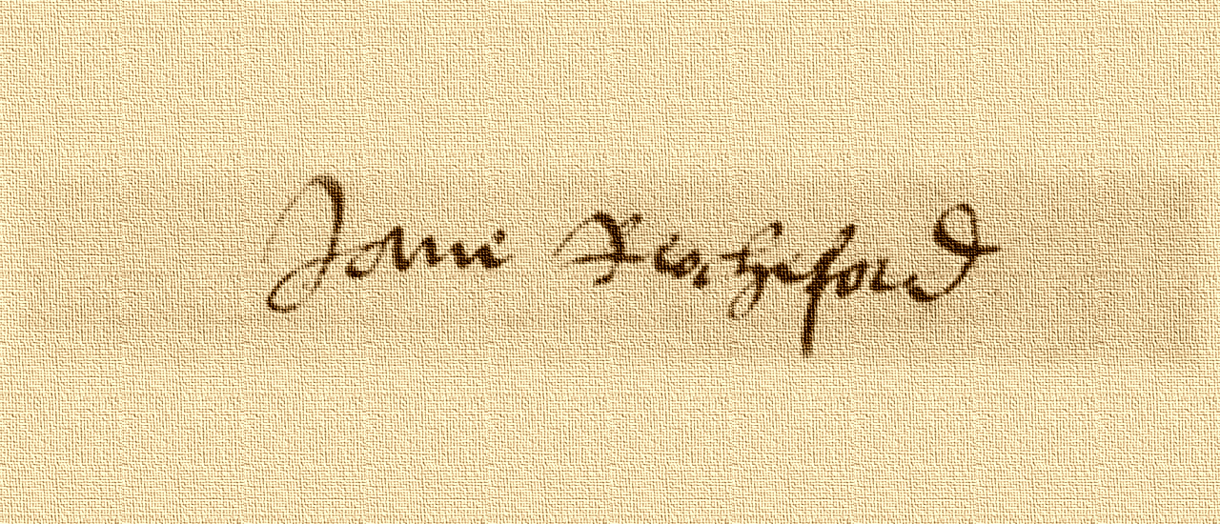Jane Boleyn, Lady Rochford, has really only left a faint impression on history. Yet I find Jane the most fascinating of all of the Boleyns, and her husband George a close second. Whether it is the real Jane and George or their mythology that fascinates me the most is arguable. My aim is to see them as humans, yet I engage more with their mythology than the few facts we have about them. But that is the nature of my research into other historical figures as well. Facts are often overwhelmed by tradition. Jane and George’s stories are quite unlike other minor historical figures. Their histories have never been stagnant. They are deeply entangled in myth, perpetuated by fictional and non-fictional historical writing. Even their marriage has developed a character of its own, and shifts with new fictional interpretations. The mythology tells us that Jane testified against her husband George, and her and sister-in-law Anne Boleyn, because she had an unhappy marriage and she was jealous of their closeness. I have repeated this often, it is incredible that this misogynistic and fatuous view has lasted into the 21st century. It’s true that Jane’s reputation has evolved somewhat, through another layer of fabrication, into an abused wife seeking revenge, slandering her husband along with her. But it is the idea of Jane as a ‘woman scorned’, the ultimate archetype, may prove impossible to shake, because it fulfils a love of scandal. It has little to do with rationality. How realistic is it that a woman would think that her husband was having an incestuous affair with his sister and was jealous over it? Or that feeling ‘left out’ would drive her to take false stories to the king that would lead to her husband’s death, considering that his death would lead to her ruin?
Did Jane give information that led to the arrest of her husband, George, and her sister-in-law, Queen Anne Boleyn,?
We have no evidence that Jane Boleyn was questioned during the coup. Because we know that Jane later gave evidence that was used against two other queens she served, Anne of Cleves, to secure Henry yet another annulment, and Katherine Howard, leading to another queen’s execution, it has long been assumed she was also questioned about Anne and George. However, there is no contemporary evidence that Jane was questioned. We do, however, have contemporary evidence of who was questioned. John Hussey, in a letter to his employer, Lady Lisle, wrote, on the 24th Of May, 1536, ‘As to the confession of the Queen and others, they said little or nothing; but what was said was wondrous discreetly spoken. The first accuser, the lady Worcester, and Nan Cobham with one maid mo; but the lady Worcester was the first ground.’1 and again on the 25th ‘As to the Queen’s accusers my lady Worcester is said to be the principal’.2 Eric Ives, who was hostile to Jane in his biography of Anne Boleyn, has suggested the ‘one maid more’ was Margery Horsman.3 However, Margery refused to co-operate, according to Edward Baynton.4 John Spelman, a judge who took part in Anne’s trial, thus, a fully reliable contemporary source, named Lady Wingfield as giving the incriminating evidence, a convenient deathbed confession.5 Cromwell himself was vague, saying only that ‘certain persons of the privy chamber and others of her side were examined’.6 Because the charges were fabricated, it is likely they received no incriminating evidence from the three ladies mentioned by Hussee, which is likely why Cromwell had nothing to report from them. Furthermore, no one seems to question whether or not Cromwell even thought that the wife of one of the convicted men would be a reliable witness.
Did Jane testify against George and Jane at their trial?
This can be answered very simply, not only did Jane not appear at their trial to testify against them, not a single witness was called. The Imperial Ambassador Eustace Chapuys attended the trial. Chapuys was, as a supporter of Katherine of Aragon and Princess Mary, hostile to the Boleyns, but even he couldn’t hold back about the unfairness of the trial. Amongst other comments, in a letter to Charles V, Chapuys observed that ‘no witnesses were produced against either [George] or [Anne], as it is usual to do, particularly when the accused denies the charge.’ 7 This demonstrates how farcical the trial scene in Anne Boleyn was.
Wasn’t Jane named in the trial as giving evidence?
Jane was, in fact, mentioned at the trial, but only once. Chapuys reports that:
I must not omit, that among other things charged against him as a crime was, that his sister had told his wife that the King [was impotent]. This he was not openly charged with, but it was shown him in writing, with a warning not to repeat it. But he immediately declared the matter, in great contempt of Cromwell and some others, saying he would not in this point arouse any suspicion which might prejudice the King’s issue. 8
This does not, however, prove that Jane gave this evidence. Anne may have mentioned this, it may have even been overheard, considering that Anne was never alone. There’s also no mention that Jane was the one who mentioned Anne and George had once spent a long time alone together. Chapuys wrote that:
Her brother was charged with having cohabited with her by presumption, because he had been once found a long time with her, and with certain other little follies. 8
The final claim that Jane gave evidence is a popular interpretation by historians, from Lancelot de Carles’ poem, in which George allegedly said ‘On the evidence of only one woman you are willing to believe this great evil of me, and on the basis of her allegations you are deciding my judgement.’ 10 Yet, George does not name Jane, or say ‘my wife’. He says ‘one woman’. Spelman already provided the name of the ‘one woman’, and that was Lady Wingfield.
Why has Jane been accused of testifying against Anne and George for centuries?
Julia Fox has successfully argued, with a thorough analysis of writing about Jane, that Jane became a scapegoat in the reign of Elizabeth I.11 The judicial murder of Elizabeth I’s mother was a difficult subject, and to present her mother as an adulteress or her father as a murderer was not politic. Thus an introduction of a third party who gave false evidence was convenient. In print the rumour first appeared in Foxe’s Actes and Monuments, or Book of Martyrs, specifically in the 1573 and 1576 editions, as a note in the margins. It states that ‘It is reported by some that this Lady Rochford forged a false letter against her husband and Queen Anne her sister, by which they were both cast away’, but it is unclear whether Foxe or the printer made the marginal addition.12 A possible source for the rumour is George Wyatt, grandson of Thomas Wyatt the Elder, who wrote The Life of Anne Boleyn during Elizabeth I’s reign. The book was not published until 1817, but there was a strong family tradition that Thomas Wyatt and Anne Boleyn were lovers before Henry VIII cast his eye on Anne. George Wyatt claimed that ‘there was brought forth, indeed, a witness, his wicked wife accuser of her own husband, even to the seeking of his blood, which I believe is hardly to be showed of any honest woman ever done’,13 exalting in Jane’s execution as ‘just punishment by law after her naughtiness’.14 The refrain was taken up by Herbert Cherbury in his Life and Raigne of Henry VIII in 1649, claiming Jane was ‘noted to be a particular instrument in the death of Queen Anne’, and in 1660 Peter Heylin’s Affairs of Church and State in England During the Life and Reign of Queen Mary embellished further, claiming Jane ‘aggravated the story that George had been found whispering to Anne when she was in bed’.15 Finally Gilbert Burnet’s History of the Reformation of the Church of England goes so far as to have Jane carrying stories to the king himself.16 Yet the major historical works of Ralph Holinshed and Edward Hall do not mention Jane, nor did Elizabeth I herself.17 The above establishes a paper trail. A rumour was planted four decades after Jane’s death, and male writers were eager to seize upon it thereafter.
Yet, a surprising early defence comes from Edmund Bapst, writing in 1891:
as for Jane Parker, she lacked all moral sense – as she proved much later, when in the most repugnant circumstances she aided Queen Catherine Howard’s amours; how could she think herself tied by duty to a husband who neglected her. However, no specific text allows us to state that the discord between the couple ever reached the level of scandal; certainly, not one supports the opinion of several authors18 that Lady Rochford contributed to her husband’s fall. On the contrary, when the latter was arrested by Henry VIII’s orders, at the moment when everyone, fearful of the King’s wrath, had no other thought than to distance themselves from the prisoner, she alone gave a public expression of sympathy and begged a pardon for him.19
Bapst has captured what is at the heart of Jane’s historiography. Jane is ‘that bawd, Lady Rochford’, who assisted Katherine Howard in her ‘follies’ and led her to her death. Because of the way Jane’s life ended, on the block, embroiled in scandal, she has become a convenient dupe for Henry VIII’s domestic violence. Anne Boleyn’s death was futile, so we search for answers. Fragments and snatches are cobbled together to provide context and motivation for Jane’s alleged actions. But these ‘actions’ are falsifications. Once we start to dismantle those fragments, one by one, the fantastical villainy of Jane starts to unravel, and we can see it for what it is. Centuries of men attempting to explain away the actions of other men, deep-seated misogyny, and an inherent need to explain how Henry VIII got away with murdering his wives.

- British History Online, ‘Letters and Papers, Foreign and Domestic, Henry VIII, Volume 10, January-June 1536’, British History Online, Vol X, #953. ↩
- L&P Vol X #964. ↩
- E. Ives, The Life and Death of Anne Boleyn, (Second Edition, Oxford: Blackwell, 2004.) 332. ↩
- L&P Vol X #799. ↩
- J. Spelman, The Reports of Sir John Spelman Vol I, ed. J. H. Baker (London: Selden Society, 1976) 71. ↩
- L&P Vol X #873. ↩
- L&P Vol X #908. ↩
- L&P Vol X #908. ↩
- L&P Vol X #908. ↩
- Ives, Anne Boleyn, 331. ↩
- J. Fox, Jane Boleyn: The True Story of Lady Rochford, (New York: Ballantine 2008) 303. ↩
- Fox, Jane Boleyn, 304. ↩
- Appendix in G. Cavendish, The Life of Cardinal Wolsey and Metrical Visions from the Original Autograph,(London: Chiswick, 1825) 262. ↩
- Cavendish, Appendix, 212. ↩
- Fox, Jane Boleyn, 307-8. ↩
- G. Burnet, The history of the reformation of the Church of England. (London: W. Smith., 1841) 146. ↩
- Fox Jane Boleyn 453. ↩
- Bapst singles out Burnet here. ↩
- E. Bapst, Two Gentleman Poets at the Court of Henry VIII: George Boleyn & Henry Howard, tr. J.A. Macfarlane, (Spain: MadeGlobal Publishing 2013) ↩

